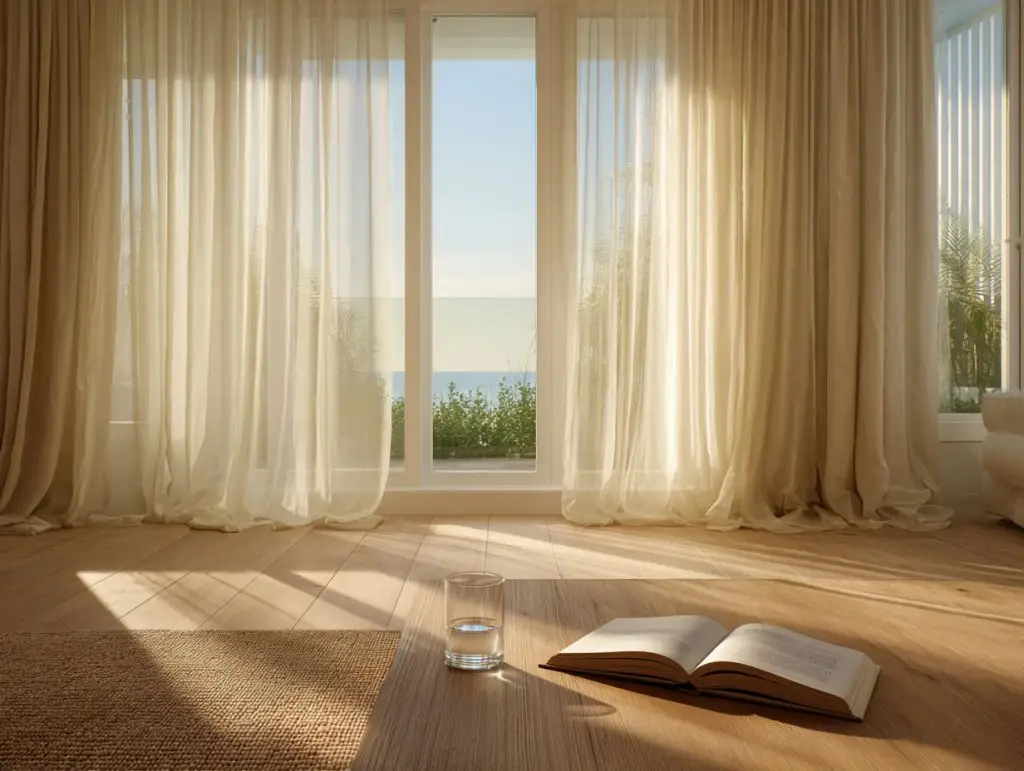
When “Clean” Still Smells Lived-In
For years I thought my house in Destin was perfectly fine — clean floors, fresh laundry, polished counters. But every time I came home after being away for a few days, there it was again — that faint “old house” smell. Not terrible, just… stale. The kind of scent that tells you someone lives here but maybe hasn’t opened the windows in a while.
I tried everything: candles, diffusers, air sprays, even those plug-in air fresheners that promise ocean breeze. The house smelled different for a few hours, but never better. Underneath the lavender or citrus, that same dull scent always came back — heavier after rain, sharper on hot afternoons.
The Truth About “Home Smell”
It took me a while to realize that what I was fighting wasn’t dirt, but buildup — layers of moisture, dust, fabrics, and trapped air.
Destin homes, especially near the coast, hold humidity like a sponge. Even when everything looks spotless, moisture quietly settles in curtains, rugs, closets, and upholstery. Add cooking odors and everyday living, and the air takes on a permanent undertone — clean but tired.
Air fresheners never remove it; they just coat it.
When I visited a house recently cleaned by Sharky, the difference was obvious: it didn’t smell like anything. It just smelled like air. That’s when I understood — real freshness isn’t a fragrance; it’s the absence of trapped residues.
The Moment I Noticed the Pattern
The smell was strongest in rooms with soft surfaces: the guest bedroom that rarely got used, the hallway with the big rug, the sofa that hadn’t been deep-cleaned in years. It wasn’t about bad hygiene — it was about time. Dust, oils, and humidity had settled in over months and years.
And no amount of wiping, mopping, or spraying was ever going to change that.
To truly get rid of the smell, I needed to clean what I couldn’t see.
That was the turning point — when I stopped covering the problem and decided to find its source.
Finding the Real Source
The first thing I learned was that no home truly smells “old.” It smells stale because particles stay where air doesn’t move. In Destin, our humidity and closed windows make that worse.
Before I even started cleaning, I mapped out where air sat still: closets, the hallway rug, the space under the sofa, the corners behind furniture, the inside of air vents. Every one of those spots was a quiet factory of odors.
I opened every window, turned on ceiling fans, and ran the HVAC on “fan only” for two hours just to move the air. The smell didn’t vanish, but it started to fade. That told me I was finally addressing the right layer of the problem.
Step 1: Deep-Cleaning What Holds Odor
Odors cling to soft materials. Wiping hard surfaces won’t help until fabrics are cleaned or replaced. My first targets were:
- Curtains and rugs. Even if they look clean, they absorb humidity and cooking oils. I washed small ones and used a professional steamer on larger rugs.
- Upholstery. Baking soda helped, but it wasn’t enough. I rented a wet vacuum and used a neutral detergent with an enzyme-based odor remover.
- Mattresses and cushions. I vacuumed every side, aired them in the sun, and used a mild vinegar mist to neutralize trapped scents.
- Closets. I wiped walls, shelves, and hangers, then left a small open container of baking soda inside.
After that session, the air changed — not instantly, but noticeably cleaner within hours.
Step 2: Cleaning the Air Itself
I used to think odor removal was about cleaning surfaces. But air holds residues too — tiny aerosols of grease, moisture, and dust.
Professional cleaners treat the air as part of the room. Inspired by that, I started:
- Replacing HVAC filters monthly instead of quarterly.
- Cleaning vents with a vacuum brush attachment.
- Running an air purifier with a carbon filter in main rooms.
- Keeping dehumidifiers running during humid weeks — 50% humidity is ideal.
After two weeks, the “old house” smell was gone from the air between cleanings — not just right after them.
Step 3: Removing, Not Masking
I threw away every scented plug-in and aerosol I had. The scent of “mountain mist” doesn’t equal clean air. It’s just perfume mixed with propellants that coat surfaces and lungs alike.
Professionals rely on neutralizers, not fragrances. I followed their example with simple, safe options:
- Distilled white vinegar diluted 1:3 with water — sprayed lightly on fabrics and left to dry.
- Open bowls of baking soda or activated charcoal near odor sources.
- Occasional use of enzyme-based odor removers for organic buildup (especially in fabrics and drains).
These don’t hide smells; they break down the molecules causing them.
Step 4: Regular Maintenance
The hardest part is keeping the freshness consistent. My routine now includes:
- Vacuuming upholstered furniture every two weeks.
- Wiping door frames, vents, and window sills monthly.
- Washing throw blankets and cushion covers frequently.
- Letting sunlight in whenever weather allows — UV light kills odor-causing bacteria.
Consistency matters more than intensity. A little every week keeps air circulation healthy and surfaces clean enough that odors never build up again.
The Result
After about a month, my home in Destin no longer had a “smell.” Guests started saying, “It just feels fresh in here.” That’s the best compliment — because real cleanliness doesn’t have a scent at all.
What I learned from Sharky’s team was simple:
Clean air is invisible, quiet, and effortless — once you stop trying to perfume it.
Read also: I Thought I Was Cleaning Safely — Then I Read the Labels


